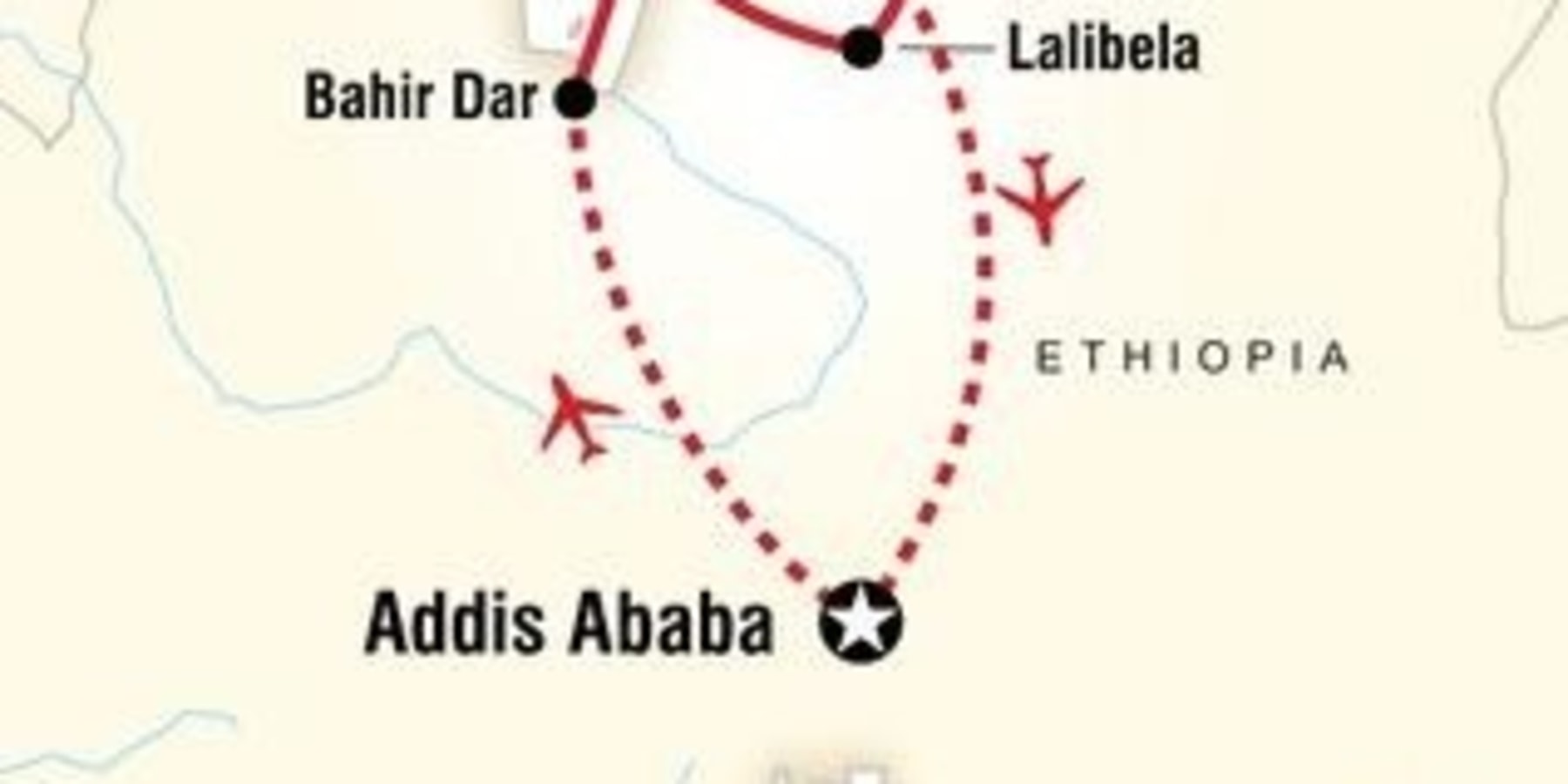
The Historic Route
The Historic Route is one of the great pleasures of Ethiopia. Nowhere else in the world can you see riches of man’s past such as those in the northern Ethiopia. A history that stretches back to the time of prehistoric man to more than 3,000 years old history of Axum; the 5th century B.C. Temple of Yeha; the 12th Century rock hewn Churches of Lalibela and the medieval Castles of Gondar. Riches that encompass the history of Ethiopia from 1st early beginning to the modern day, riches that are set amongst some of the most stunning scenery in Ethiopia; and where our people work today, just as their ancestors have done for generations.
Bahir Dar
Bahir Dar is one of the fast growing regional cities in Ethiopia, set on the south eastern shore of Lake Tana (Ethiopia’s largest lake,) where local fishermen still use papyrus boats, and just 30 km from the spectacular Tiss Isat Falls. Here the Blue Nile /Or Abay/ creates “Smoking Water” an awe-inspiring sight as it plunges into the gorge below.
From Bahir Dar you must explore some of the ancient monasteries that were built around Lake Tana, or on the many islands. These includes Deke Stephanos with its priceless collection of icon, as well as the remains of several medieval emperors, Kebran Gabriel (Closed to women), and Ura Kidane Mihret with its famous frescoes.
Gondar
Gondar was the 17th Century capital city of Ethiopia, renowned for medieval castles and churches. The primary attraction is the Royal Compound with many majestic castles. Outside this enclave, there are fascinating historic sites such as the Bath of Fasiledes, the monastery of Qusquam and the icon rich monastery of Debre Birhan Selassie.
Axum
Axum, Ethiopia’s most ancient city, and capital of one of the most glorious empires of the past, is one of the most illustrious links in the historic circuit. The Axumite Empire flourished 3,000 years ago. Its riches can still be pictured as you gate on the magnificent stelae or Obelisks, the graves of King Kaleb and King Gebre Meskel, and the legendary bath of the Queen of Sheba.
The 16th Century Cathedral of St. Mary of Zion was probably built on an earlier 4th Century Church and is the holiest Church in Ethiopia. In its sanctuary is said to lest the original Ark of the Covenant.
Lalibela
King Lalibela is credited with the foundation of the eleven Rock-hewn Churches in the 12th Century. One of the world’s most incredible made creations, they are a lasting monument to man’s faith in God. These remarkable edifices were carved out of the solid rock, in a region where the rugged landscape still protects the Churches from mass tourism.
Harar & Dire Dawa
50 kms from Dire Dawa on the southern edge of the mountains is the old walled city of Harar. It was established between the 7th & 9th centuries.
Harar was for many centuries a major commercial centre & moreover a great centre of Islamic learning. Harar , a town of mosques, minarets, and holy shrines, is also remembered, in Europe, as a city visited in the mid-nineteenth Century, by the British Orientalist, Sir Richard Burton, translator of the “Thousand and one Night”.
The Adere people with their customs, manner of dress & language live inside the walls.
Places of interest are the house of French Poet Rimbaud, the colorful market and, the museums. One of the city’s unique attractions is the ‘hyena man’ who feeds the hyenas every evening in the open air.
The main, but more modern town of Dire Dawa, was the creation of Djibout-Addis Railway which is ceased to function from Dire Dawa to Addis Ababa today. This important engineering achievement, developed at the end of the 19th Century, has played a major part in Ethiopia’s development.

